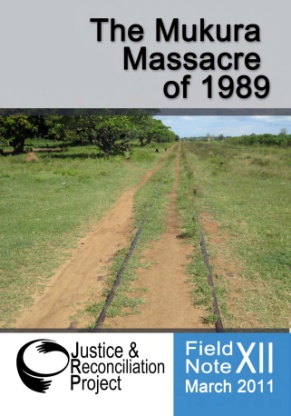
On July 11, 1989, the 106th battalion of the National Resistance Army (NRA)1 allegedly rounded up 300 men from Mukura and other surrounding areas and incarcerated some of them in train wagon number
C521083. These men were suspected of being rebel collaborators against the NRA regime, but there is little evidence to suggest that most of them were anything other than innocent civilians. Trapped in the crowded train wagon, trying not to trample on one another, the men struggled to breathe, and by the time they were released after more than four hours, 69 of them had suffocated to death, while 47 of them survived.
Twenty two years after the occurrence of this massacre, the Justice and Reconciliation Project (JRP) reconstructs an account of what took place, using narratives from survivors, in order to bring the concerns of victims to the attention of the Government and other stakeholders. Through our interactions with survivors of the massacre, we learnt that besides constructing a memorial mass grave in which the dead were buried, the Government also supported the construction of the Mukura Memorial Senior Secondary School and a public library in memory of those who lost their lives.
This report aims at providing a narrative of key events leading up to the massacre, based on the testimonies of survivors, and explores the major initiatives which were used by the incumbent Government to promote accountability, healing and reconciliation for the families of the Mukura victims and the survivors from the train wagon. A central finding of this report is that most of these initiatives to provide reparation—though likely well intentioned—were implemented in an untimely manner, with little involvement and consultation of the victims and in times of increased political incentive for Government. As such, the people do not attach much significance and ownership to structures such as the mass grave and Mukura Memorial Senior Secondary School. The report concludes with lessons learnt and recommendations aimed at improving the implementation of future post-conflict transitional justice (TJ) initiatives which the government may undertake in other parts of the country, such as northern Uganda which has recently emerged from conflict.
To access the report, click here.

One thought on “The Mukura Massacre of 1989, FN XII”
Comments are closed.